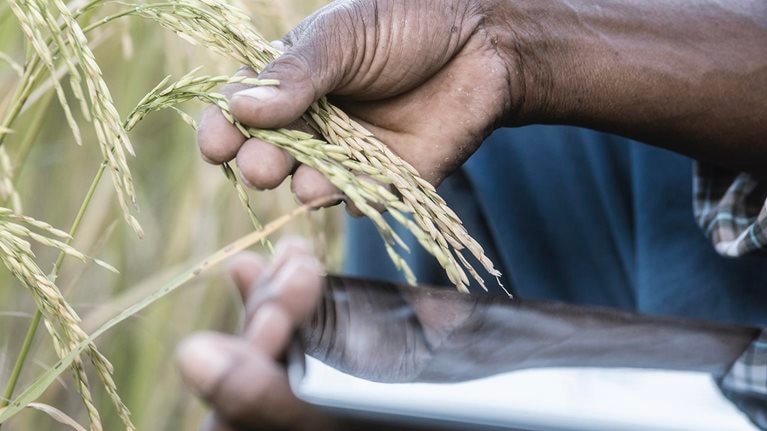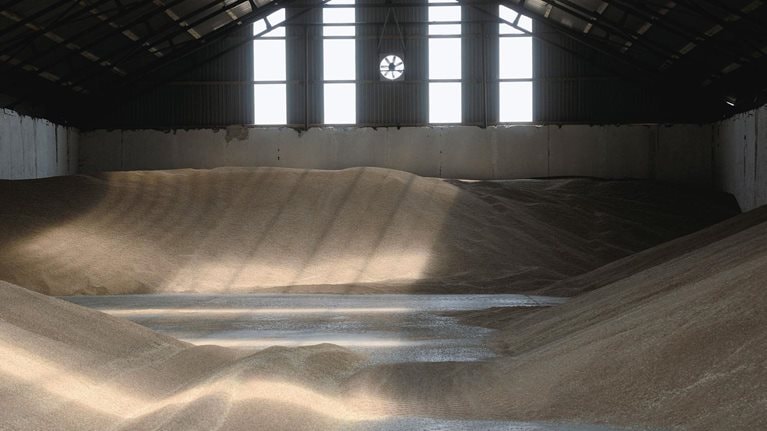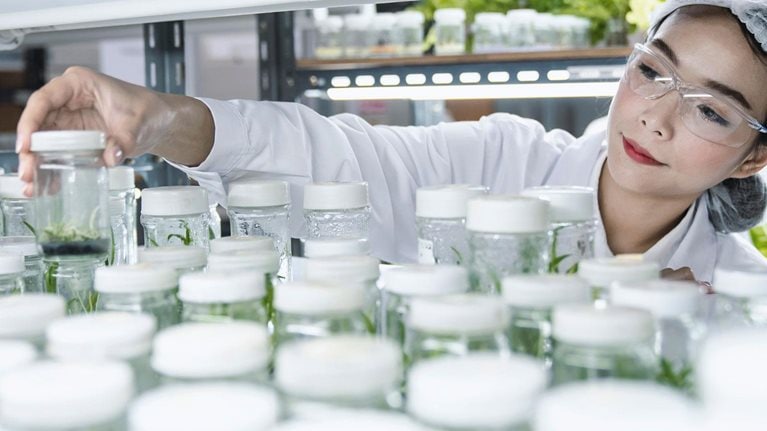Between July and October 2021, torrential rains drenched northern parts of China, flooding major agricultural provinces such as Hebei, Henan, and Shandong (Exhibit 1). The floods affected millions of acres of cropland,1 causing billions of dollars in food losses and greatly increasing prices for consumers.
Agricultural disruption caused by extreme weather is not unique to China: research has found that several regions critical to global agricultural production are susceptible to the effects of climate extremes. For example, more than 40 percent of the variation in crop yields in recent decades was caused by extremes in precipitation and temperature, affecting production of Asian corn and rice, European wheat, and North American corn, wheat, and soy.2

The COVID-19 pandemic has also intensified supply chain shocks. Canadian farmers, for instance, lost an estimated $2.9 billion in earnings due to labor shortages, and 47 percent of agricultural employers were unable to hire all the workers they needed.3 European farmers and agribusinesses suffered economic losses in the first wave of the pandemic due to the closure of trade channels (such as food services), labor shortages, delays in food and raw-material deliveries, and slowdowns in food production caused by virus outbreaks at processing plants.4
Food processing plants in the United States have also been hard-hit. One research group counted 100,000 cases and 466 deaths from COVID-19 among farm and food processing workers in every state between May 2020 and September 2021. The researchers identified almost 2,000 outbreaks at meat processing plants, fruit and vegetable farms, snack food facilities, and seafood trawlers.5
In addition, extreme weather and the pandemic have caused fertilizer prices to increase, adding to global inflationary pressures. Average 2021 nominal prices of diammonium phosphate and urea, for instance, were about 96 percent higher than their 2019 averages.6 In turn, increasing fertilizer prices have contributed to global food insecurity, as global food prices in 2021 jumped to their highest level in a decade.7 The ongoing conflict in Ukraine is further compounding the situation, with the Food and Agriculture Organization of the United Nations stating that the global supply gap from potential shortfalls in agricultural exports from Russia and Ukraine could raise international food and feed prices by more than 20 percent.8
To respond to agricultural supply chain shocks caused by these kinds of notable events, agricultural companies such as food processors and input providers can consider implementing the next generation of end-to-end supply planning based on a four-step approach. This approach involves the integration of data sources to enable real-time monitoring; simulation to produce various supply chain scenarios; deployment of appropriate optimization algorithms for real-time responses to shocks; and full automation of the first three steps to produce automatic response systems (Exhibit 2).

In this article, we look more closely at these approaches. Pursuing these measures could make agricultural organizations more resilient and save them money, as well. In our experience, companies that follow these approaches and deploy relevant technology have seen 10 percent cost reductions in the supply chain and inventory reductions of up to 25 percent.
Laying the foundation: Data integration and real-time monitoring
Providing seamless, real-time access to data relevant to stakeholders involved in supply chain planning is a key consideration on the journey toward automated response systems. While internal company data sets may offer reliable information on logistics, transactions, and inventory, many organizations lack deeper visibility throughout their entire supply chain due to underutilization of the vast amounts of freely available external data.9 Combining external information with existing internal data can provide a more detailed understanding of how shocks could affect an organization’s supply chain operations. Moreover, given that the costs of cloud-based data storage and computation have fallen, aggregating these various data sources and deriving real-time insight from them has become more straightforward.10
Integrating public and private data sources may be a powerful foundation on which to mimic reality. Models of the real world are often referred to as “digital twins,” or virtual replicas of an organization’s physical supply chain (Exhibit 3). With the right data, digital twins could include all key elements of the supply chain, from farm-level production and harvesting to inventory and points of sale. But digital twins may also be built for specific supply chain stages where visibility may currently be low. Take, for example, a digital twin of global corn exposure to notable anomalies that incorporates climate, text, and satellite data. Climate anomaly insights (for example, “rainfall in this region is higher than it has been in the past 25 years”) combined with text-based insights from news outlets (for example, “the number of articles related to flooding or inundation in this region has increased 60-fold compared with the past five years”) and satellite-derived field information (“one million hectares of corn are grown on 50,000 individual fields in the affected region”) could provide insights on the types of supply chain disruptions that may be likely to occur further downstream.

Using digital twins to simulate scenarios
Digital twins of physical supply chains provide a strong basis for simulating a variety of scenarios, such as changes in climate or government policy. While a range of commercial software solutions exist to help simulate specific elements of agricultural supply chains, there is a growing ecosystem of open-source tools and packages based on programming languages such as Python or R, for example, that could be used to build tailored approaches (see sidebar, “How open-source software may help”).
Take crop yield forecasting, which is the art of predicting crop yields and agricultural production before the harvest actually takes place—typically a couple of months before the end of a growing season. Fluctuations in crop yields have implications for downstream activities such as harvesting logistics and inventory planning. Simulating crop yields could be achieved via mechanistic models (in which future plant growth is predicted based on underlying processes such as photosynthesis and respiration), as well as by deep learning–based approaches11 (which aim to predict yields based on high-resolution satellite imagery). There is a range of open-source algorithms that companies could use to tailor yield prediction models to specific crops and geographies, which, in turn, may help to inform harvesting and production decisions.
After having simulated different scenarios related to crop yields or factory outages, organizations can choose from a range of optimization methods that can help them make informed decisions on topics such as how to best reroute trucks around flooded areas or how to determine appropriate inventory levels.12 Potential approaches include deterministic optimization techniques such as linear programming, as well as more advanced stochastic methods—which aim to account for uncertainty—such as approximate dynamic programming and reinforcement learning.13
In addition to optimizing for cost-related factors, optimization models could incorporate rigorous sustainability constraints. For example, one company that was engaged in sourcing crop residues (such as straw) from grain crops (such as wheat and corn) applied constraints to promote soil health, including leaving enough residue on farms to return nutrients to the ground.
Choosing the appropriate approach may depend on factors such as data availability, cost, and the complexity involved in implementing optimization models. According to Saeed Ghadimi, assistant professor in management sciences at the University of Waterloo, “Many real-world supply chain challenges are both nonlinear and sequential in nature, implying that traditional optimization approaches may fail to provide optimal decisions when supply chains are subject to multiple shocks in succession.” More advanced optimization approaches capable of handling uncertainty may allow better decisions to be made based on information updates from sources such as satellite imagery or news text.
Connecting the dots: Automating supply chain decisions across the entire organization
While the level of automation may vary depending on the type of agricultural supply chain, there are prerequisites for operating a technology-driven supply chain planning system that is capable of identifying and driving potential evaluation:
- Easily accessible real-time updates. All information on the current status of the supply chain should be accurately reflected in the system, ideally in real time. This requires strong integration of various data feeds and delivery of real-time changes in the appropriate format, including web apps, email updates, and message notifications.
- Coordinated execution management. Planning and execution of responses should be coordinated within the planning system; changes to planning and “off the record” transactions or manual bypasses are not considered best practices.
- Change management and trust. Company employees must be able to trust the system, and mindsets and behaviors may need to be adapted to promote system use. Relevant initiatives may include training, role modeling, incentives, and implementing rules to prohibit bypassing the system.
- Technology capabilities. Streamlined automation of supply chain decision response requires companies to build the right capabilities. These include IT teams capable of both supporting complex systems and working hand in hand with supply chain planners to promote adoption. In addition, data science and engineering talent may be needed to help maintain and fine-tune the advanced analytics functionalities present in these systems.
- Rapid error handling. Automated systems should identify and automatically correct deviations from expected values. For example, the system should notify relevant stakeholders if actual purchase order lead times deviate from values agreed upon in contract documents with the supplier, and it should propose potential solutions.
- Real-time updates of projections. Automated systems should be able to produce updated projections for supply, demand, and inventory—as well as resulting costs, shortages, and stock levels—at appropriate time intervals.
- Prescriptive decision response. The system should have an intelligent engine that can produce optimal recommendations based on trade-offs and can plan for adjustments to deal with problems such as sudden supplier shortages, quality issues at a site, sudden demand spikes, and unexpected orders.
We have found that agricultural companies that succeed in implementing these prerequisites in the context of supply chain transformations may capture reductions in supply chain operating costs of up to 15 percent, as well as an increase in overall EBIT of up to 6 percent.
Shocks to supply chains from events such as extreme weather, the COVID-19 pandemic, and the invasion of Ukraine have led to billions of dollars of losses across global agricultural supply chains. Building automated planning systems that can handle high levels of uncertainty could potentially lead to improved preparedness against food security risks and higher cost savings for organizations affected by global supply chain shocks.


